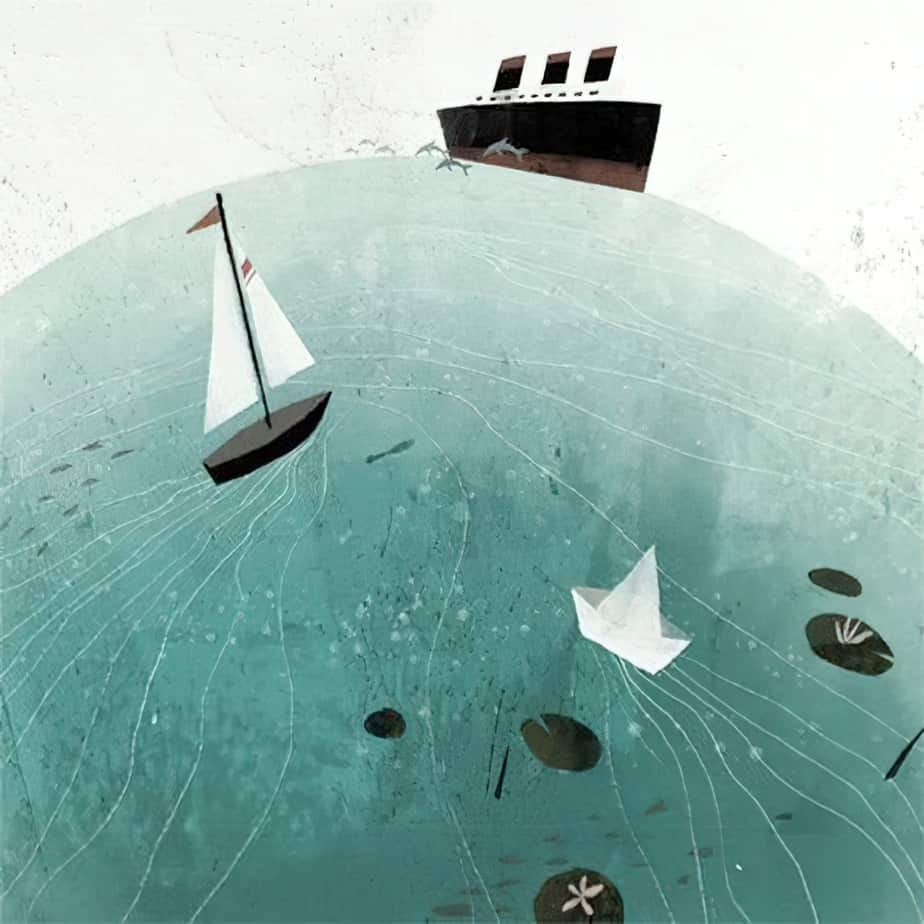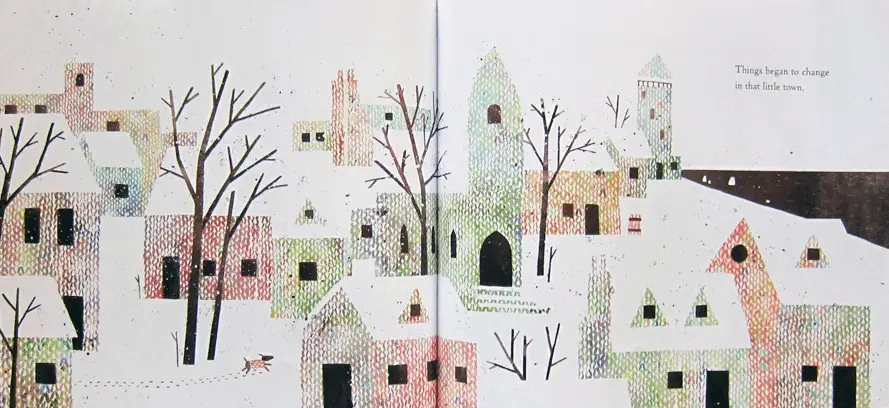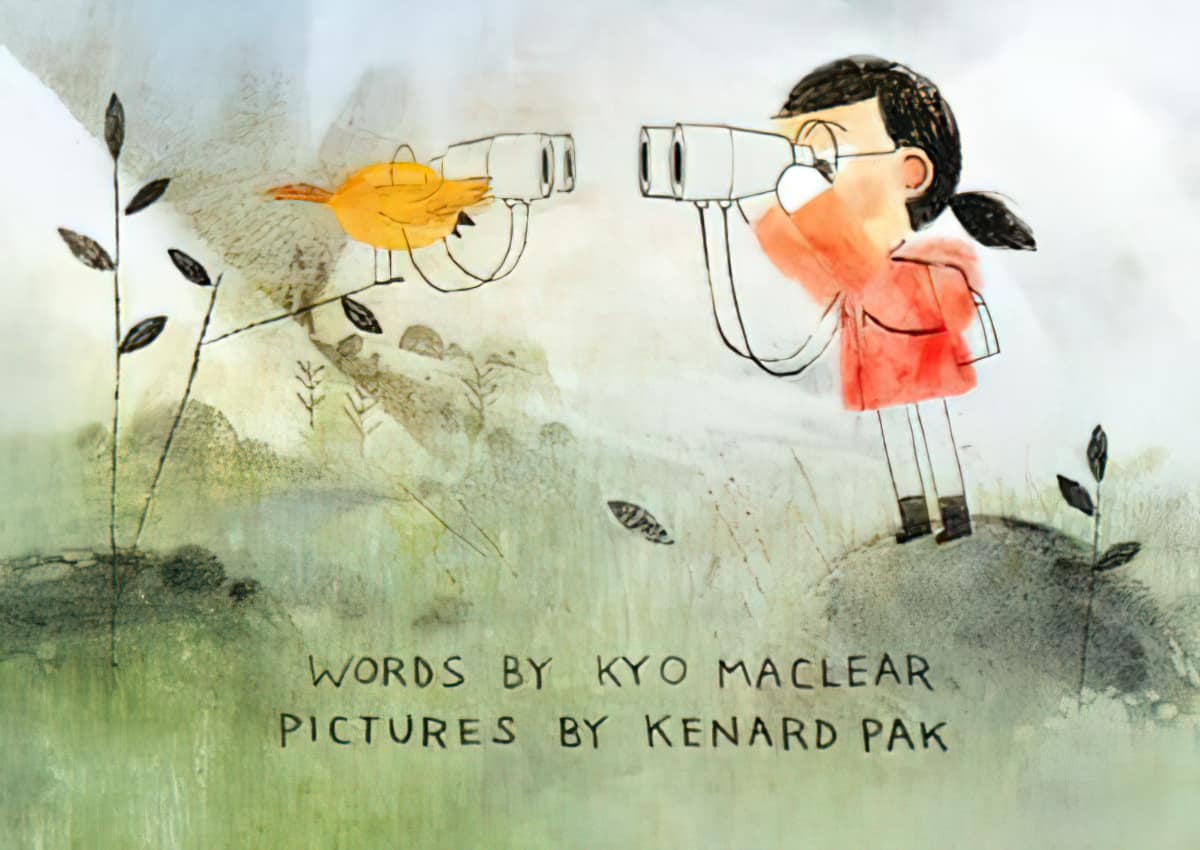The Fog is a picture book by written by Kyo Maclear and illustrated by Kenard Pak. This is an example of a story for children that starts out in comical fashion, but you soon realise there’s a horrifying environmental message. The metaphor of fog serves double duty as a symbol of climate change and as a psychological state. Where to from here? The ending offers part of the answer.
SETTING OF THE FOG
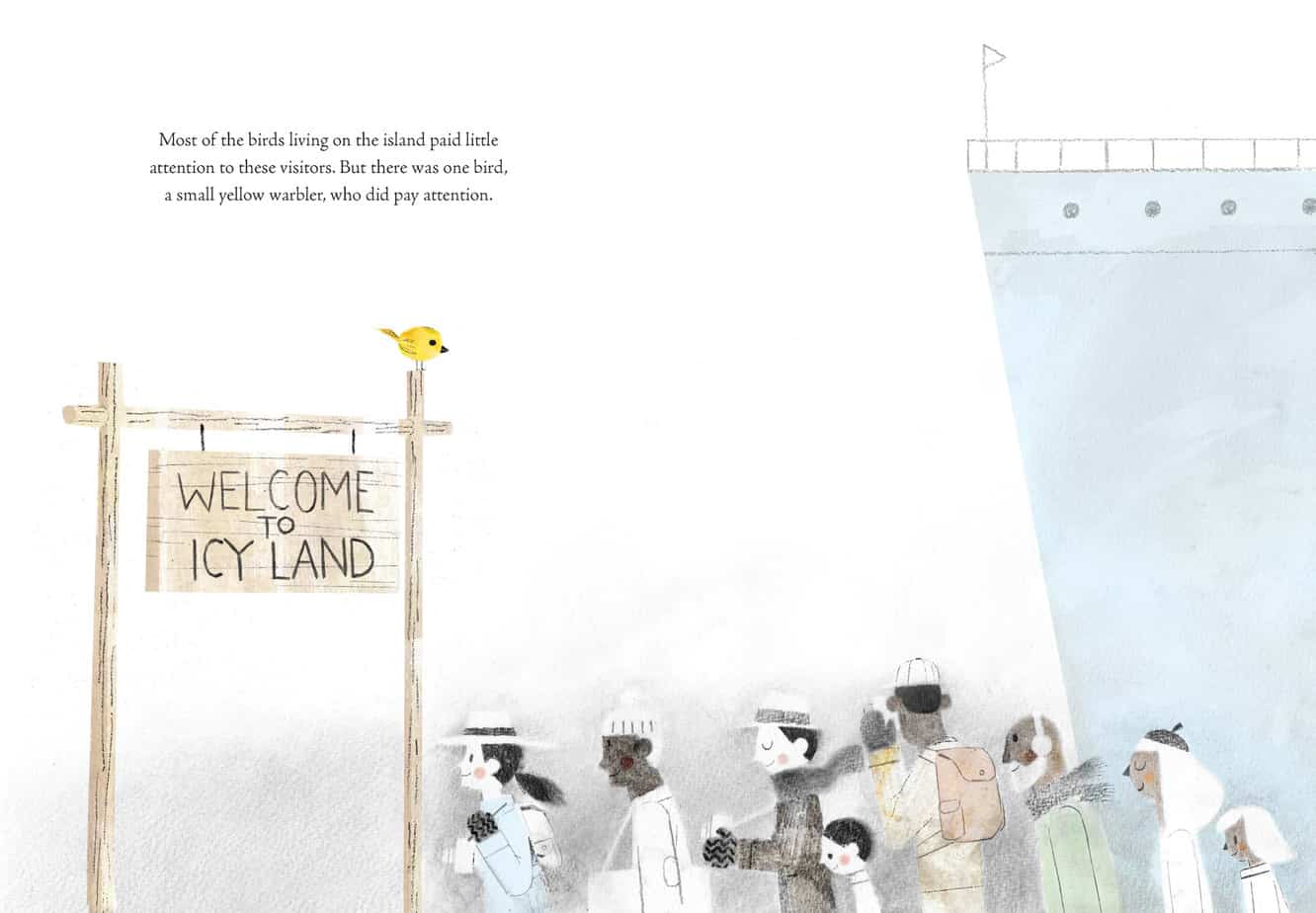
- PERIOD — Although the natural scenery suggests atemporality, this picture book will prove very much an environmental story of its time.
- DURATION — Technically the story takes place within a single warbler’s lifetime. In reality it would take place over a longer period (well, we hope). Time is a rubber band in this particular story. We don’t know exactly how far it’s been stretched. Likewise, we don’t know exactly how long we have left before our climate becomes insufferable for all but a few humans.
- LOCATION — The story feels like it’s based on a place in Northern Europe, but could be Northern America or Iceland. (The author lives in Canada, the illustrator in America.)
- ARENA — Icy Land is an island. Islands are utilised in various ways across narrative, but in a climate change story, the island carries extra symbolism: We may all feel like we’re on an island, but we are all connected when it comes to looking after our one and only planet. By the end of the story the characters on the island have connected with characters from all around the globe, puncturing the illusion that we are all battling alone.
- MANMADE SPACES — Icy Land, like any beautiful spot, is mostly a tourist destination and there’s evidence of tourist facilities.
- NATURAL SETTINGS — The story is set in a fictional place first known as Icy Land. It is a place of natural beauty, though this doesn’t change even once the fog rolls in, due to the skill of the illustrator.
- WEATHER — This story features several inversions. The first (humorous) inversion is a human-watching bird. The second is far darker: a cooling. It’s not really an inversion, since climate change means some places will get colder while other places get hotter. Climate change is about extremes. But overall the planet is heating, so the cooling down of this small area feels like an inversion. The fog will probably be read as pollution. If you’ve ever experienced a smoke crisis due to bush fires, you’ll know that smoke looks identical to fog (though when it’s smoky you can’t breathe, and people die of respiratory illness).
- TECHNOLOGY CRUCIAL TO THIS PARTICULAR STORY — The warbler uses the technology humans are currently utilising to deal with climate change. In the nest there is a fan and some contraption that he (or she) has rigged up. This feels like a metaphor for those of us waiting for a techno Jesus to save us all.
- LEVEL OF CONFLICT — We are currently suffering through an era in which a large, influential segment of the population do not accept the reality of the climate crisis, and even if they do, prioritise their own wealth above anything else. When the girl in the red hood asks ‘can you see what I see?’ she is a Greta Thunberg archetype, but an archetype common across children’s literature — children can typically see what adults cannot, precisely because they notice.
- THE EMOTIONAL LANDSCAPE — The bird and the girl are noticers, and this is their superpower. Unlike most others around them, they are correct to be concerned about the changes to their environment. They are anxious as a result, but their anxiety propels them to act. Fog is often used in stories to symbolise confusion or lack of a way forward. Here, when the girl is lost in the forest, she doesn’t know what to do about the climate.
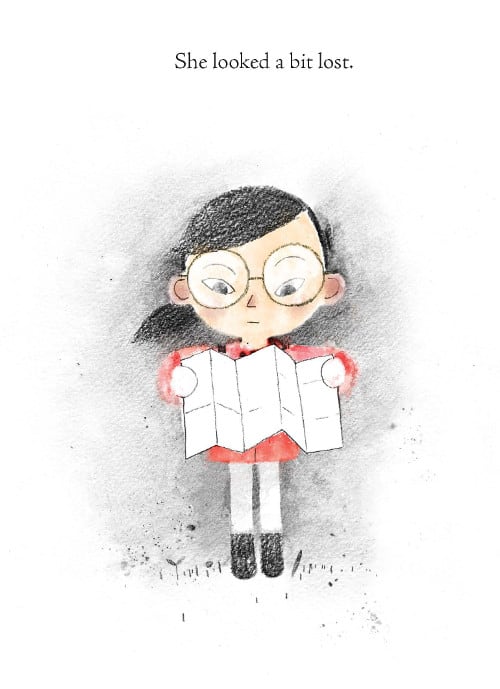
STORY STRUCTURE OF THE FOG
PARATEXT
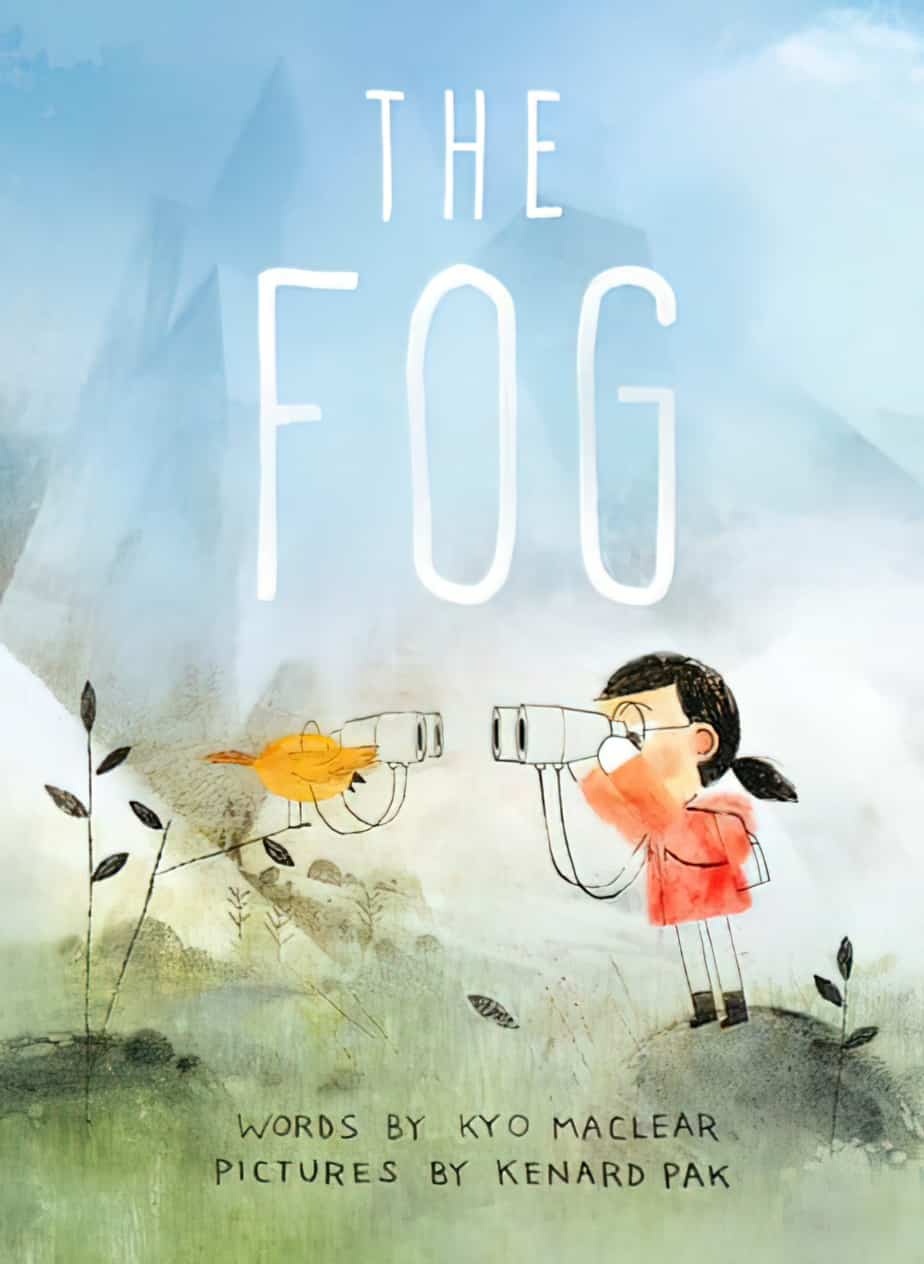
Verso flap of the hardcover:
Why has the fog come?
When will it leave?
Why doesn’t anyone notice it?
Is anyone else thinking this could be on the flap of a Stephen King novella? The flap copy continues:
Set in the far and icy north, this is the mysterious and enchanting story of a sudden fog, a yellow warbler and a small human.
Warble is a small yellow warbler who lives on the beautiful island of Icyland, where he pursues his hobby of human watching. But on a warm day, a deep fog rolls in and obscures his view. The rest of the birds don’t seem to notice the fog or the other changes Warble observes on the island. The more the fog is ignored, the more it spreads. When a Red-hooded Spectacled Female (Juvenile) appears, Warble discovers that he’s not the only one who notices the fog. Will they be able to find others who can see it too? And is the fog here to stay?
MARKETING COPY
SHORTCOMING
This is one of those stories in which the main characters stand in for entire groups.
The bird at first seems to be a comical creature, because birds wearing glasses can’t help but look comical, right? Below we have another bespectacled bird, but in a very different kind of book:
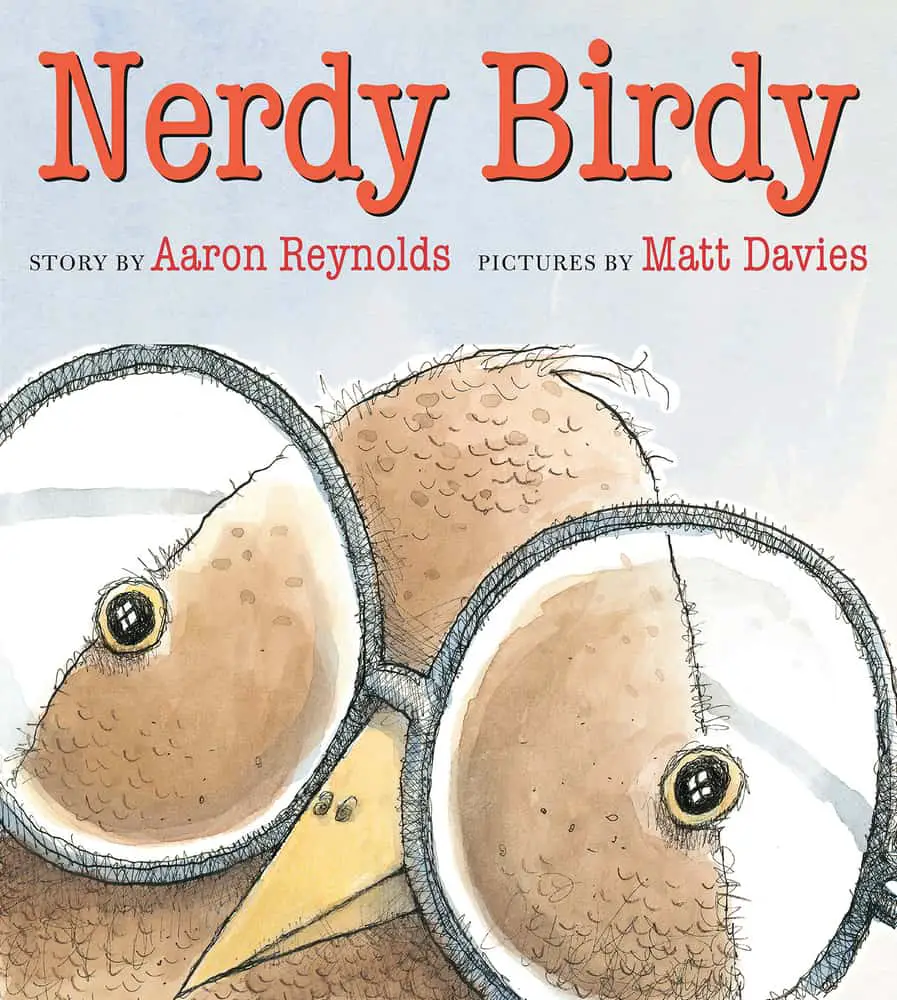
![JUFFROUW SPITS OP REIS [c. 1948] Piet Broos](https://www.slaphappylarry.com/wp-content/uploads/2020/09/JUFFROUW-SPITS-OP-REIS-c.-1948-Piet-Broos-robbers-polar-bear-bird-glasses.jpg)
But when the warbler realises something terrible is happening, the storytellers turn him into a more serious character. He doesn’t entirely stop being funny; his annoted notebook means he never stops noticing and never stop being funny. (Via intratextual labels, the warbler classifies humans the way humans classify birds — by their appearance and behaviour.)
DESIRE
The bird likes his status quo, human-watching. When he notices the tourists stop coming, he wants to find out why and to put things right.
OPPONENT
The Minotaur opponent is climate change.
PLAN
At first the warbler tries to fix the environment by adapting his own little life to the new normal. But this doesn’t fix the bigger problem. ‘The fog’ is still there. Everyone’s life is still awful.
THE BIG STRUGGLE
Worse, everyone is starting to forget how good things used to be.
The warbler finds the girl, who is lost in the woods. Whenever a character is hopelessly lost in the wilderness, this is probably the climax of a mythological journey — where the hero meets the Minotaur in the centre of their psychological labyrinth. The bird helps the girl to become unlost, which is the first part of the long journey out of that labyrinth.
ANAGNORISIS
The girl and the bird have the potential to be opponents to each other, but in fact this is a story about co-operation. The spread below shows the moment humankind and nature really begin to see each other. Note their placement on the page — neither is in superior position. They realise at this moment that each is reliant upon the other for survival.
The bird stays at home, so that journey is a classic Robinsonnade. The girl’s mythic journey is Odyssean, and mostly takes place off the page. This is a masterful blends of two major types of mythic journeys. Or is it? I think it’s actually a blend of all three! This book is also an example of the new kind of feminine mythic structure, in which a character (femme or otherwise) thinks and feels her way out of a major problem, not via conflict but via cooperation. For more on all that see The Three Types Of Modern Myth.
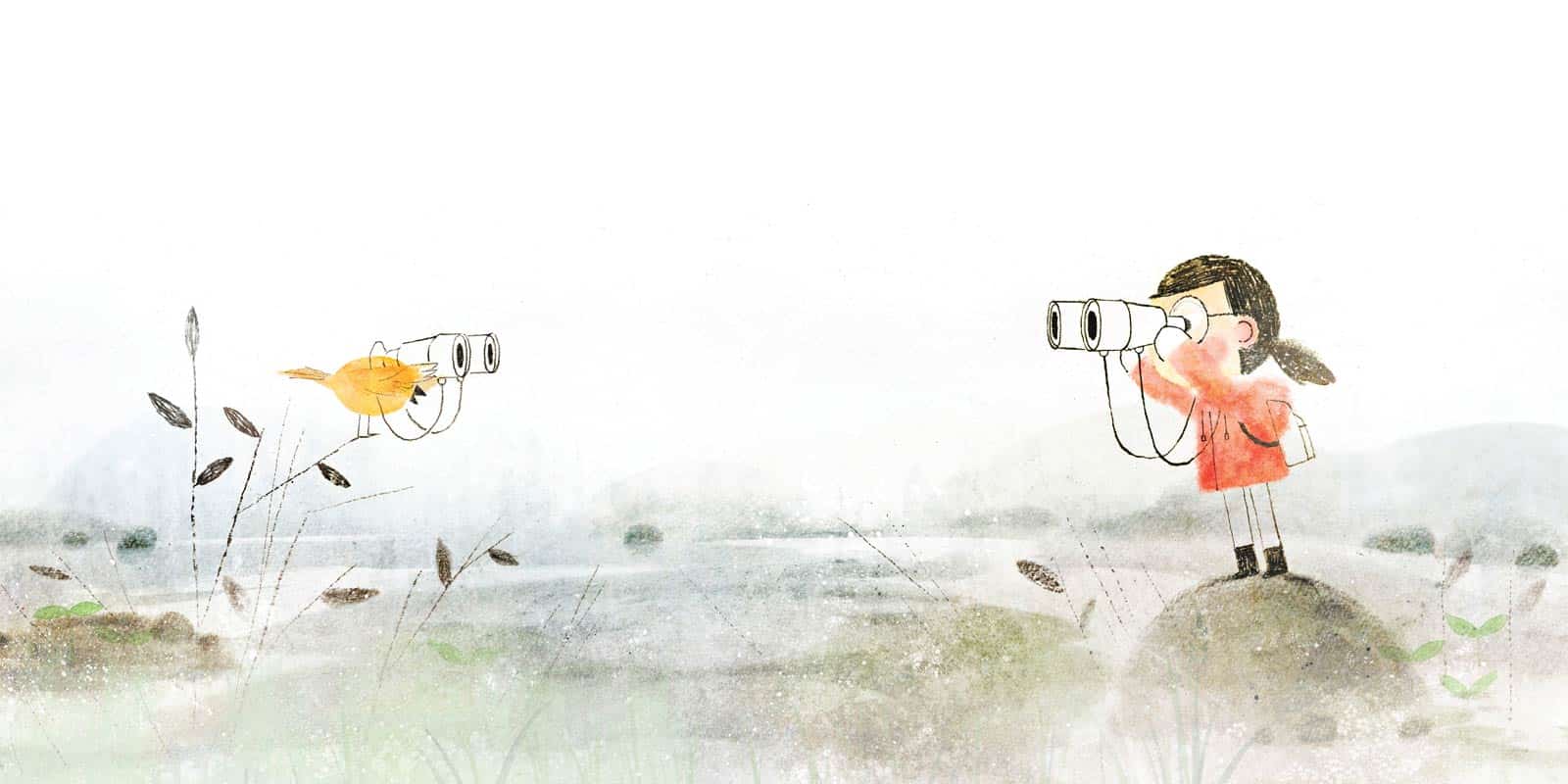
After this revelation, plans change. They engage the rest of the world in the fight to save our habitable climate.
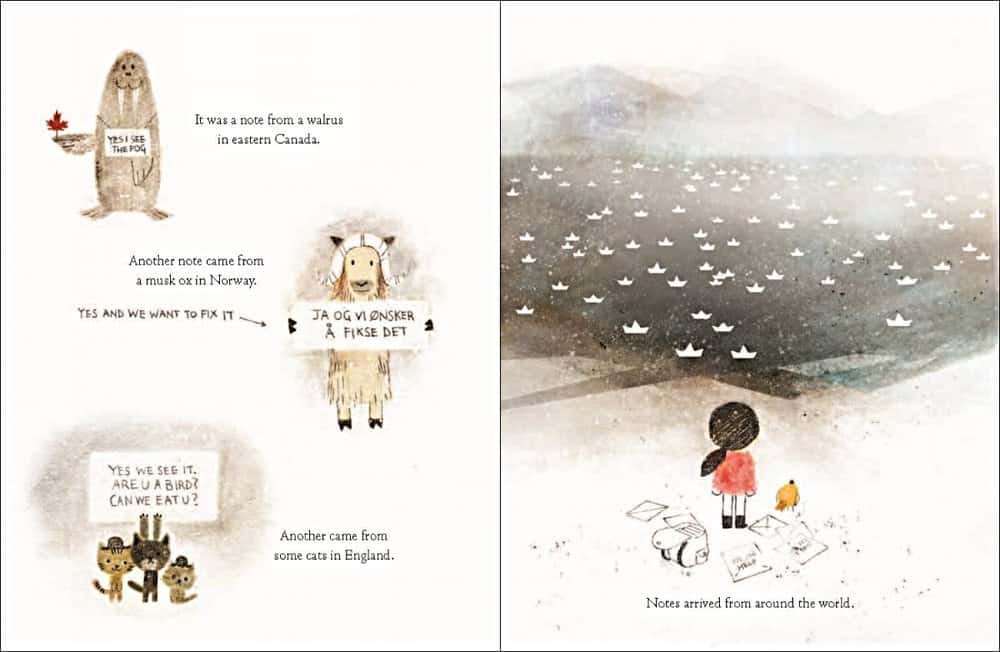
NEW SITUATION
Notes arrived from around the world. With each one, the fog began to life a little. The wind began to blow again.
The illustrator has depicted positive actions via tiny paper boats, which is masterful.
EXTRAPOLATED ENDING
Children will see from the ending that humans and animals must work together, with other likeminded people from around the world.
RESONANCE
I really, really hope this picture book won’t be too sad to bear in a few decades’ time. If so, it won’t be for lack of children’s book storytellers trying to raise the alarm.
FOR FURTHER INVESTIGATION
If you like the art style of this picture book, you’ll also like Jon Klassen’s.
